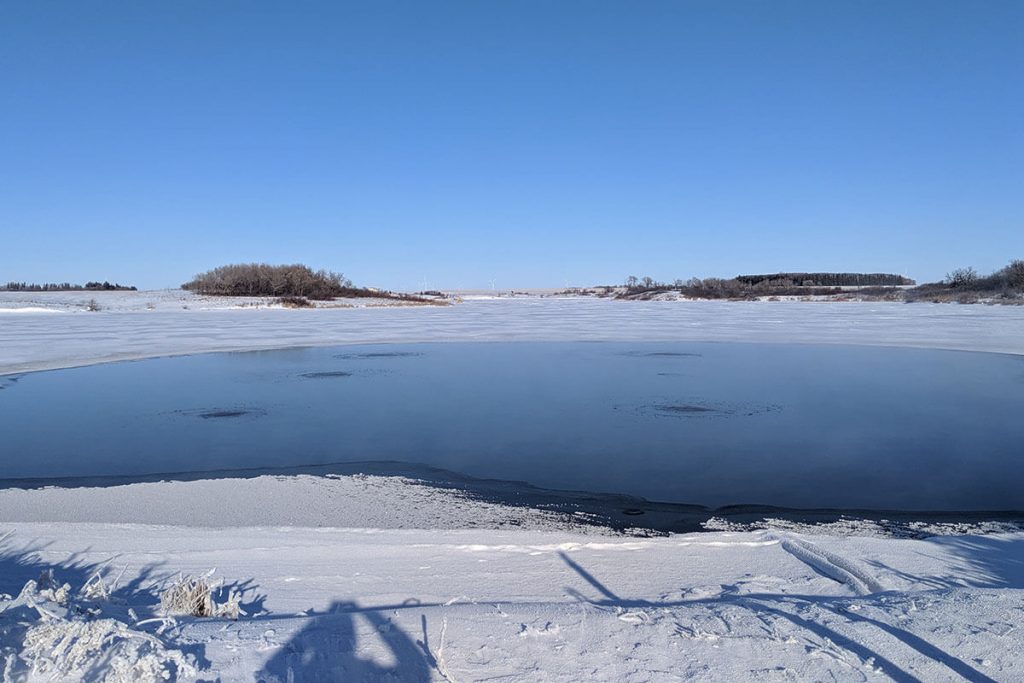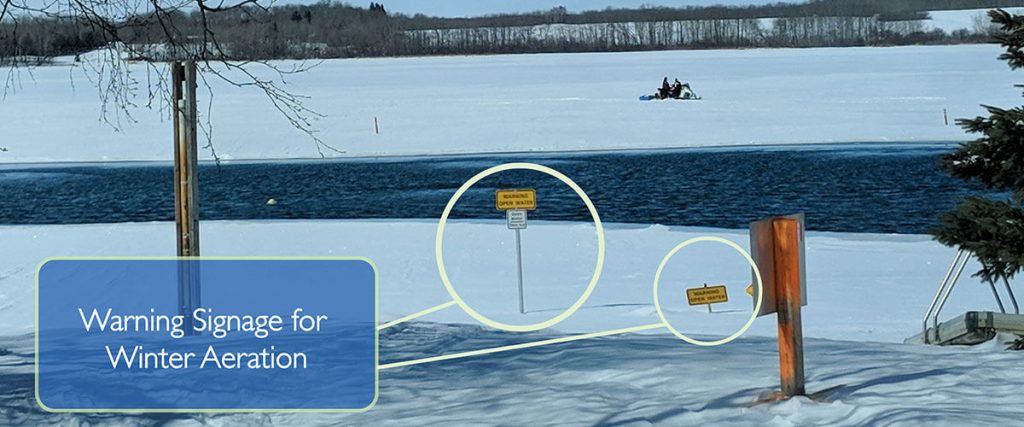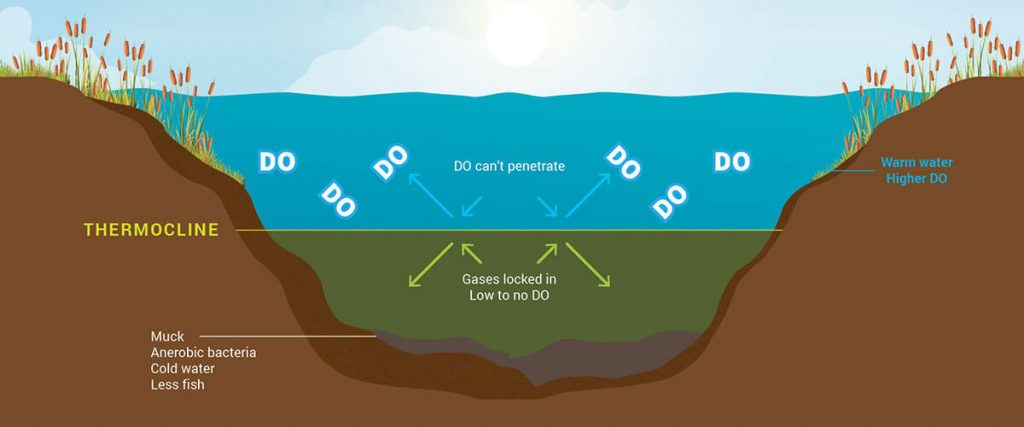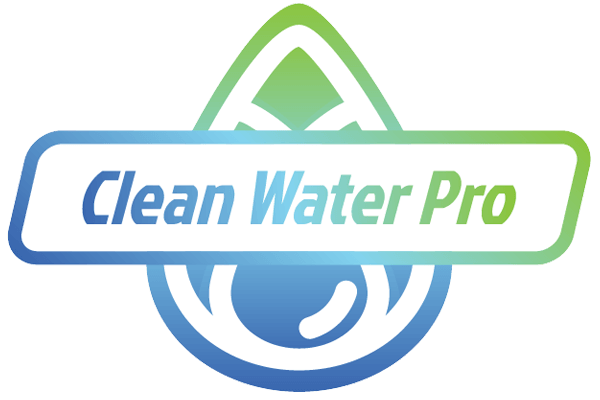Typically, the main reason to aerate over the winter months is to overwinter fish. It is critical to maintain dissolved oxygen (DO) levels in the lake or pond over the winter months for fish to survive.
Some species, such as northern pike, can survive on 1 to 3 mg/L of dissolved oxygen, whereas trout species require 4-6 mg/L for optimal health.
We answered the question, Why is Dissolved Oxygen Important for Ponds, Lakes, and Dugouts? previously in a blog post. Check it out and learn how dissolved oxygen levels affect your body of water.

Water Aeration and Open Water
The amount of open water is another consideration as this is where the oxygen exchange occurs. Fish need dissolved oxygen to be healthy, and as the level of dissolved oxygen drops, so does their survival rate. Keeping a large open water area allows the toxic gasses to escape and dissolved oxygen to enter, keeping the lake well mixed, also known as destratifying.
Destratifying the water body or breaking the thermocline (see picture for reference) is critical.

The mixing releases the build-up of toxic gasses from the bottom of the lake or pond and maintains dissolved oxygen throughout the water column. Fish will naturally migrate to the aerated area, where the fishing will typically be better.
Although aerating through the winter benefits the body of water, please note that it is best not to aerate during the winter if it is unsafe to have open water.
If you choose to aerate during the winter, it is crucial to mark the area and put proper signage in place to warn of the hazards. Firing up aeration early in the spring can be beneficial not only for the aeration benefits but also for removing the ice quickly, which reduces the potential hazard.

Aeration during the summer months will improve water quality, which reduces algae and aquatic weeds and will increase dissolved oxygen. Again, if the water is in a higher stage, the water will require more dissolved oxygen to improve its health. Adding dissolved oxygen to the lake or pond using fine bubble subsurface aeration will prevent fish kills, improve water for livestock consumption, reduce odour, and decrease algae, muck, and aquatic growth.
